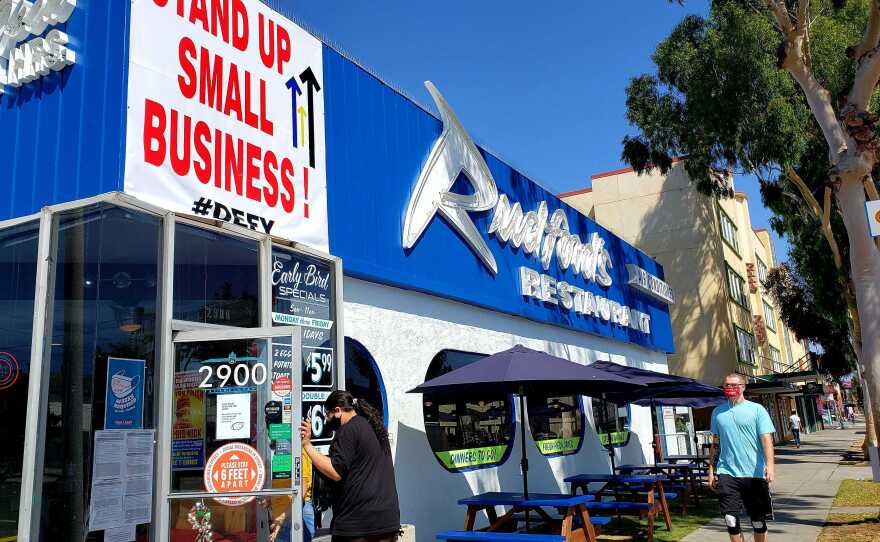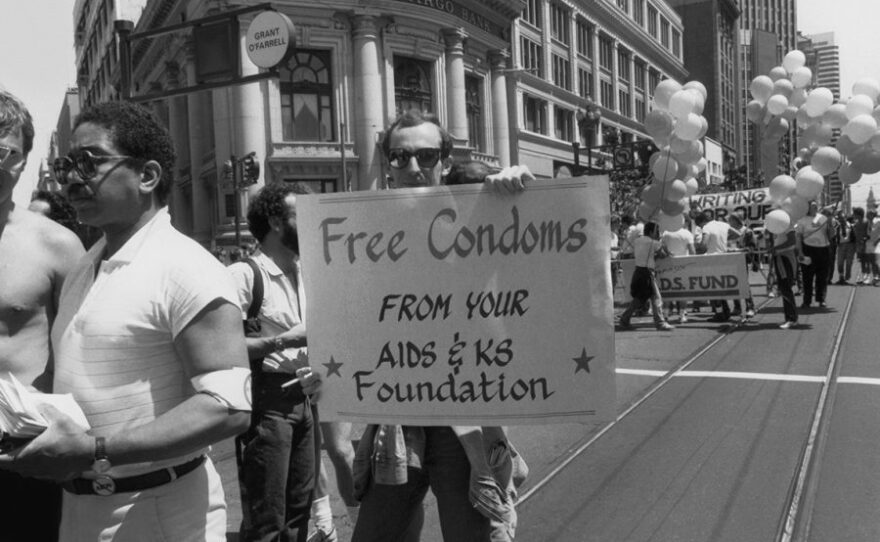On March 16, 2020, San Francisco Mayor London Breed had a press conference indoors, without a mask on and several officials huddled around her. That seems crazy today, but at the time the benefits of masks and social distancing hadn’t become apparent.
Yet, the message Breed delivered that day shaped her city’s future for months to come.
"The new public health order that we're announcing will require San Franciscans to remain at home with exceptions only for essential outings," Breed said. "These measures will be disruptive to day-to-day life, but there is no need to panic."
The Bay Area was the first region in the state to issue a stay-at-home order, and public health experts now say those early critical days likely set the region on a trajectory that it's still benefiting from.
When the state’s tier system was unveiled in August, San Francisco County was in the red tier, while Alameda County (which is home to Oakland) was in the purple tier. Two months later, San Francisco is in the least-restrictive yellow tier, while Alameda is in the orange tier. Southern California, meanwhile, has fared worse, with San Diego this week joining Los Angeles, Riverside and San Bernardino in the most restrictive purple tier.
Why the disparity? The answer is multifaceted, yet simple. It comes down to timing, politics, demographics and public health histories.
The short answer is the Bay Area counties recognized the virus’s threat just a tad earlier and ever since has acted more aggressively, said John Swartzberg, an infectious disease expert at UC Berkeley.
Swartzberg noted that San Francisco issued its stay-at-home order only three days before the rest of the state.
"That number of days doesn't sound like a lot, but given how fast the pandemic was spreading, it helped a great deal," he said.
Gradual reopening

San Francisco's initial response also set the tone for its stance on reopening. Elected officials, health officials and residents all seemed to understand the region would remain restrictive, said Erin Allday, The San Francisco Chronicle’s health reporter.
"Right from the start it was really aggressive and really fast, and any time there's been a hint of something moving in the wrong direction, they respond to that and clamp down on it," Allday said.
After two months with a statewide stay-at-home order, Gov. Gavin Newsom started allowing counties to reopen businesses. Public health officials now largely view that as a mistake—the state began to see a surge in COVID-19 cases. Different counties responded differently.
"San Francisco did experience a summer surge, but it never really blew up like it did in some other places," Allday said. "As soon as officials saw that happening, they immediately halted our reopening in July, whereas other counties kept pushing forward."
San Diego was one of those counties. Public health officials allowed restaurants to reopen at limited capacity in late May, then salons and barbershops a week later, then gyms, hotels and bars two weeks after that. The school district announced it would reopen in-person learning in the fall, but then cases quickly surged in the county and those plans were scrapped.
On Aug. 28, when Newsom announced the tier system, San Francisco had already weathered its surge and its case count was on a downward path. And while San Francisco and San Diego both ended up in the red tier, what they did next was different.
San Diego officials opened everything, including limited capacity indoor gyms, dining and salons that were allowed under the red tier guidelines.
San Francisco took a more gradual approach. Allday described the strategy as staying one step behind the tier designation.
For example, San Francisco would authorize reopenings allowed under the red tier when it moved to orange, and orange reopenings when it moved to yellow.
"My general sense is people are appreciative," Allday said. "There was more frustration over the summer when the rest of the state was moving along so fast. But there wasn't a lot of pushback, wasn't people storming the streets and making demands. Now that the city has weathered two waves, April and summer, and come out on the other side looking great, people now even more so say, 'we're fine with this.'"
Even late last month, San Francisco paused reopenings as cases and hospitalizations ticked up. It had planned to reopen indoor pools, bowling alleys, and locker rooms at fitness centers, and expand capacity at indoor restaurants, places of worship, and museums. But those plans are now on hold.
And this week, the city rolled back some of its reopening even further, closing all indoor dining.
This contrasts with San Diego's strategy, said Supervisor Nathan Fletcher, who has unsuccessfully advocated for a more restrained approach.
"The minute we can possibly open things, we open things," Fletcher said. "They chose to be more cautious and by doing that they have not lived on the precipice of open and close."
History of public health

Allday said the San Francisco region has another asset: its history with public health. The city was the epicenter of the AIDS epidemic in the United States in the 1980s, and after delaying proved deadly, established a robust public health response.
"San Francisco was so in the thick of that epidemic, so they take these things so seriously," Allday said. "People guiding the response now grew up under that era, they're very aware of that, so that guides the local response."
She said it also established trust between the community and public health officials.
"We don't have any of that, 'Is this real, do I trust what my leaders are saying?'" she said.
Swartzberg, the UC Berkeley infectious disease expert, said the liberal politics of the region might also mean the public is more willing to wear masks and obey public health rules.
Also important, that Zuckerberg San Francisco General Hospital has a long-established public outreach program.
"The attitude of that hospital to caring for underserved people has played a major role," he said.
Different demographics
Another possible reason San Francisco and Alameda counties have lower case counts is that inequality is more pronounced there than in San Diego County, said Rebecca Fielding-Miller, an epidemiologist at UC San Diego.
"It comes back to housing prices," she said. "People who live in (San Francisco and Alameda) counties are people who can afford to live there, whereas the essential workforce doesn't live in the same county. Across San Diego, our housing prices are diverse enough that frontline workers also live in San Diego County."
She noted that Yolo, Solano and Mendocino counties, which surround the Bay Area, are still in the red tier. Those areas have lower household incomes and longer commute times, suggesting essential workers might live there, but work in San Francisco or Alameda, which would mean their cases would be counted in their home counties.
"The Bay Area is segregated at the county level, with wealthier people who can afford to work at home in the counties with the best case rates, whereas San Diego is plenty segregated, but it is all within the county," Fielding-Miller said.
Despite its demographics, there is plenty San Diego County can control, she said. The county could adopt a more gradual strategy of reopening, and further boost its outreach efforts in the South Bay and other parts of the county that are being hit the hardest by COVID-19.
For now, as the county moves back to the most restrictive purple tier, the rules will be set by the state: no indoor dining, indoor gyms, retail stores must be at 25% capacity, and schools that have not yet opened cannot reopen.







